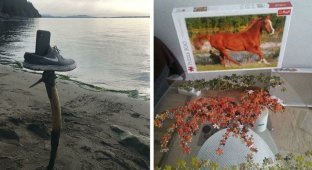The most toxic village in Indonesia (7 photos)
This place is called Tanjung Uma, a former fishing village now drowning in garbage and disease. Doctors have identified it as the place with the highest health risk for residents in the country. And all because of the uncontrolled dumping of garbage and waste. And now the locals' feet peel and get ulcers if they are dipped in the "fishing" sea. 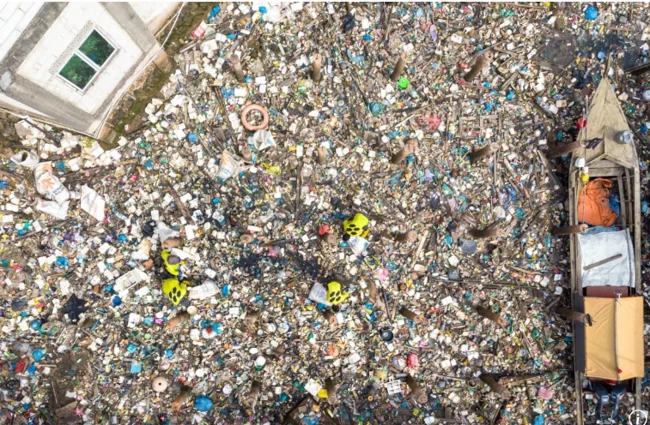
A boat proudly sails through a sea of garbage!
What Happened to the Beauty of Tanjung Uma
Last century, there were very few people here, but the sea was azure.
But the population of the nearby town of Batam has skyrocketed from 47,000 in 1980 to more than 1.2 million today, fueled by the oil and shipbuilding industries. But while the city grew, the village nearby writhed in agony from filth and toxic runoff. 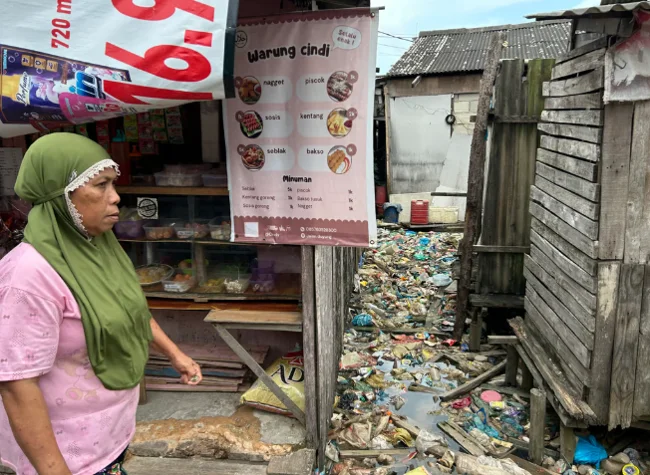
I really like this photo - on the water! covered in garbage! - KEBAB
Industrial waste was sent into the water, as was waste from the printing house, everything is aimed at heating Tanjung Uma.
There are about 9 thousand houses here, mostly huts and fishing shacks. The garbage here is not taken out for weeks - what's the point, if the whole sea is in garbage, why take away the garbage of the locals? So they throw garbage out of the windows: plastic bottles, polystyrene foam and food waste. 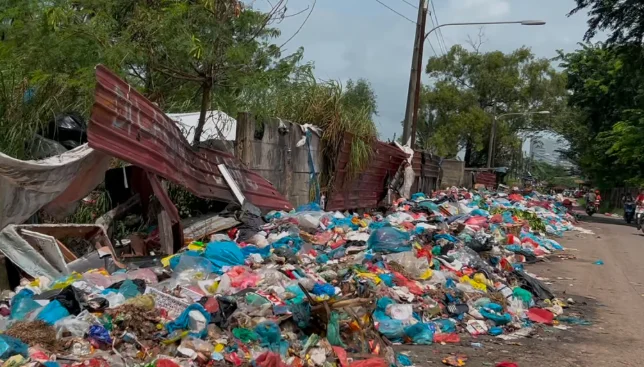
Do you know why the garbage is piled up here? So the fence doesn't fall down!
Tens of thousands of garbage bags stretch more than 100 meters along the road, stinking of tropical heat and rot.
But not all the trash is local. Seasonal storms carry trash from the city center of Nagoya, and canals carry waste from the malls, markets and apartment blocks of Batam to Tanjung Uma.
What do the residents of a dying village live on?
The locals, many of whom live on less than Rp 5 million a month. For the village's 300 fishermen, the sea that once fed them has become a poisoned wasteland. Decades of coral removal, mangrove destruction have decimated fish stocks. 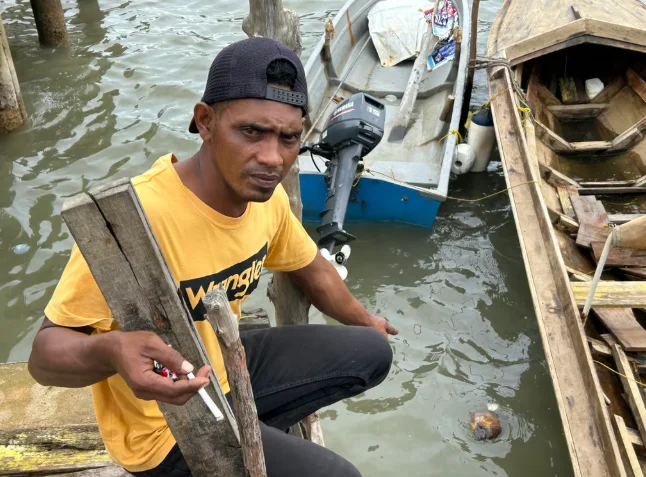
A local fisherman points to a dead fish floating in the water
The average fisherman's daily catch has dropped from 80 kg 20 years ago to just 20 kg "on a good day". But dead fish often wash up on the shores of Tanjung Ume.
They say they are not used to the smell outside, it's just a "background smell".
What diseases do people have in the most toxic village 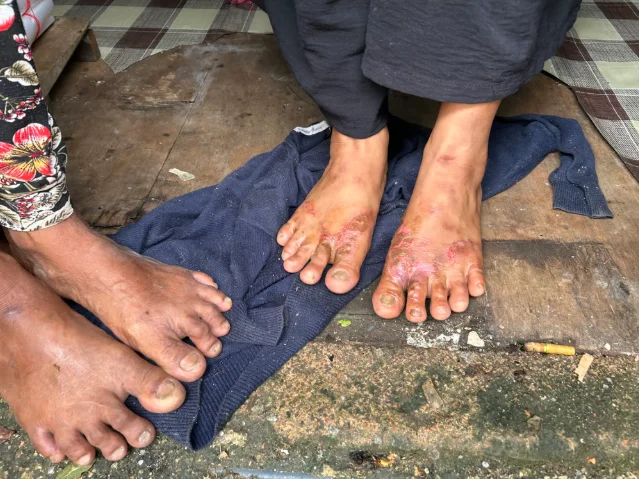
Feet of typical residents of this village
One of the most common diseases is a skin disease, or more precisely, fungal ulcers on the feet. People with such ulcers do not go to the doctor, because he will tell them to exclude the cause of the disease - toxic water and garbage.
In second place is dysentery, because the water from local water utilities is just as smelly.
This is just a model village
Similar destruction of villages occurs in many Asian countries - from the Philippines to the Maldives. And all because of the rapid population growth, which leads to huge pollution, which no one deals with. If you remember India, then such a problem seems insoluble. 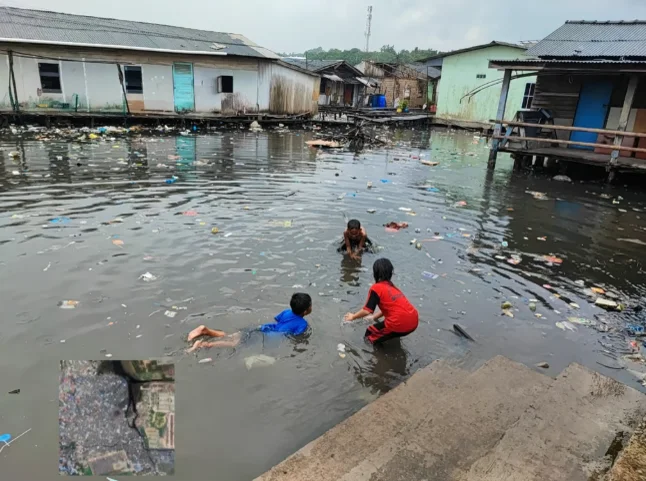
Children are swimming, who will stop them
The government announced a garbage collection program. For a kilogram of collected plastic, 3,500 rupees were offered. But residents decided that such a fee was not worth the effort, no one began to collect plastic.
They decided to fine for throwing garbage on the street - and nothing came of it either. Because people are poor and they had no money to pay fines, no one takes them.
People don't see the point in cleaning up and taking care of their trash, because every day the canals bring in ten times more trash than they can produce. 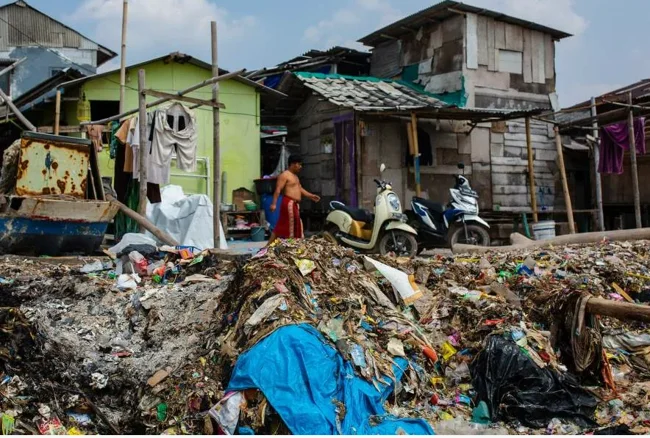
Poetry of an Indonesian province
First, they need to build structures to catch their trash from the waters, so that only local trash remains. What else can they do?













